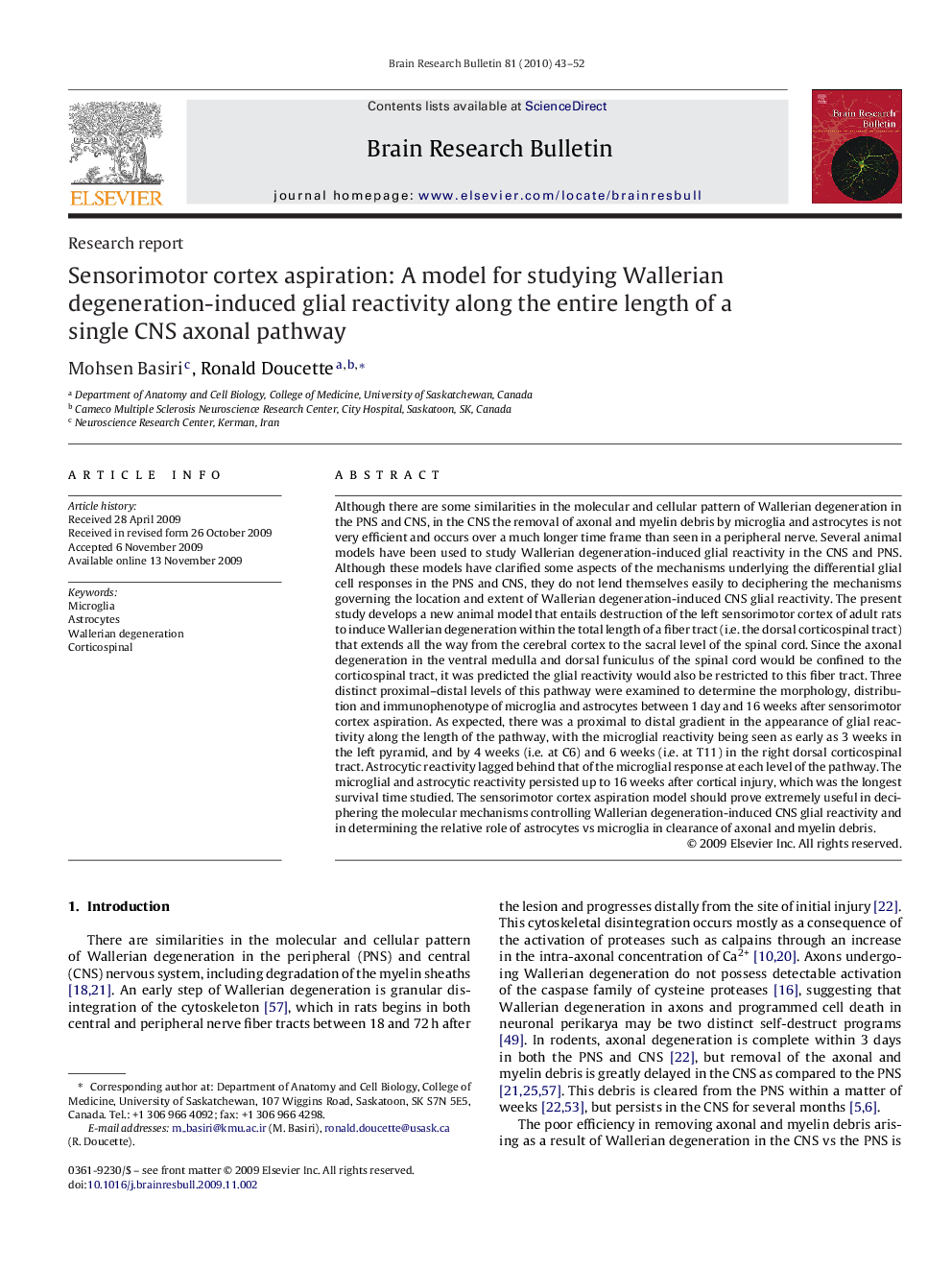| کد مقاله | کد نشریه | سال انتشار | مقاله انگلیسی | نسخه تمام متن |
|---|---|---|---|---|
| 4319431 | 1290814 | 2010 | 10 صفحه PDF | دانلود رایگان |

Although there are some similarities in the molecular and cellular pattern of Wallerian degeneration in the PNS and CNS, in the CNS the removal of axonal and myelin debris by microglia and astrocytes is not very efficient and occurs over a much longer time frame than seen in a peripheral nerve. Several animal models have been used to study Wallerian degeneration-induced glial reactivity in the CNS and PNS. Although these models have clarified some aspects of the mechanisms underlying the differential glial cell responses in the PNS and CNS, they do not lend themselves easily to deciphering the mechanisms governing the location and extent of Wallerian degeneration-induced CNS glial reactivity. The present study develops a new animal model that entails destruction of the left sensorimotor cortex of adult rats to induce Wallerian degeneration within the total length of a fiber tract (i.e. the dorsal corticospinal tract) that extends all the way from the cerebral cortex to the sacral level of the spinal cord. Since the axonal degeneration in the ventral medulla and dorsal funiculus of the spinal cord would be confined to the corticospinal tract, it was predicted the glial reactivity would also be restricted to this fiber tract. Three distinct proximal–distal levels of this pathway were examined to determine the morphology, distribution and immunophenotype of microglia and astrocytes between 1 day and 16 weeks after sensorimotor cortex aspiration. As expected, there was a proximal to distal gradient in the appearance of glial reactivity along the length of the pathway, with the microglial reactivity being seen as early as 3 weeks in the left pyramid, and by 4 weeks (i.e. at C6) and 6 weeks (i.e. at T11) in the right dorsal corticospinal tract. Astrocytic reactivity lagged behind that of the microglial response at each level of the pathway. The microglial and astrocytic reactivity persisted up to 16 weeks after cortical injury, which was the longest survival time studied. The sensorimotor cortex aspiration model should prove extremely useful in deciphering the molecular mechanisms controlling Wallerian degeneration-induced CNS glial reactivity and in determining the relative role of astrocytes vs microglia in clearance of axonal and myelin debris.
Journal: Brain Research Bulletin - Volume 81, Issue 1, 15 January 2010, Pages 43–52